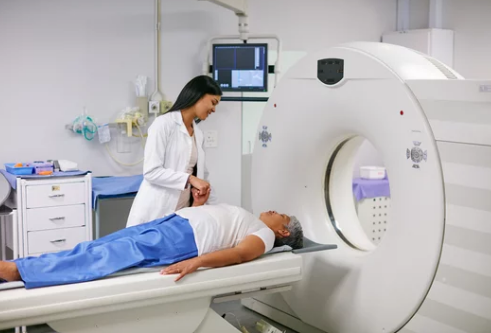MRI coil design has evolved rapidly to improve signal quality and patient comfort in medical imaging. These advances focus on wireless, lightweight, and highly shielded coils that deliver better performance through precise electromagnetic control. The same principles behind these innovations are now inspiring improvements in coils used in Tokamak fusion reactors.
Tokamaks use powerful magnetic coils to contain and control plasma, which is essential for fusion energy research. The challenge is managing high magnetic fields and ensuring coil stability. By borrowing design techniques from MRI coils—such as coaxial shielding and flexible, controlled wiring—Tokamak technology can enhance coil efficiency and durability in demanding environments. This cross-industry innovation shows how MRI coil design can directly influence the next generation of magnetic confinement systems in fusion reactors.
This connection opens new paths for developing Tokamak coils that offer better magnetic field control and faster prototyping. It also highlights how advances in one high-tech field can drive breakthroughs in another, providing a valuable example of technology transfer between medical imaging and energy research.
Key Takeways
- Improved electromagnetic control in MRI coils benefits Tokamak coil design.
- Modern coil shielding and flexibility boost Tokamak magnetic field management.
- Cross-field innovation speeds new developments in fusion reactor technology.
Advancements in MRI Coil Design Influencing Tokamak Technology
Innovations in MRI coil design have improved magnetic field control and signal precision through advanced coil arrangements and real-time adjustments. These improvements guide similar developments in tokamak technology, where controlling strong magnetic fields and maintaining uniformity are essential for plasma stability.
Fundamental Principles of MRI Coil Design
MRI coils use arrays of smaller coils to improve magnetic field precision and signal quality. These phased array coils combine signals from multiple elements to boost the signal-to-noise ratio (SNR), which directly enhances imaging clarity.
Coils are designed to provide uniform field coverage, minimizing variations that reduce image quality. Techniques like multi-coil arrangements and active real-time adjustments help maintain this uniformity even during movement or changes in the magnetic environment.
Advances include integrating wireless coils and AI to improve performance and patient comfort. The focus is on balancing field strength, coil size, and geometry to optimize both signal quality and operational stability.
Application of Electromagnetic Coils in Fusion Devices
Tokamaks use electromagnetic coils to control plasma with strong magnetic fields. Like MRI coils, their design must create precise and stable magnetic fields to confine plasma efficiently.
Coil configurations in tokamaks include complex multi-coil arrays that shape and stabilize the plasma. Advances in coil materials and design, inspired by MRI technology, improve the efficiency and durability of these coils under extreme conditions.
Moreover, real-time coil adjustments based on sensor feedback are essential in fusion devices. This mirrors MRI’s use of active shim techniques to correct field inhomogeneities, ensuring better plasma containment and stability.
Optimizing Magnetic Field Homogeneity for Plasma Containment
Uniform magnetic fields are critical in both MRI and tokamak systems. In tokamaks, homogeneity in the magnetic field ensures plasma remains confined and stable, preventing disruptions that can damage the device.
MRI technology has advanced methods like multi-coil control and motion tracking to maintain field uniformity. Applying these methods to tokamak coil systems helps dynamically correct field variations as plasma shifts inside the device.
Techniques such as phased array coil design and real-time feedback loops allow precise control over the magnetic field shape. These approaches reduce instabilities and improve the efficiency of plasma containment, a key challenge in fusion energy research.
Next-Generation Innovations Derived from MRI Engineering
Advances in MRI coil design have led to new materials and methods that improve performance under extreme conditions. These innovations bring better durability, precise control, and real-time sensing. Such progress can directly enhance the coils used in fusion reactors.
Superconducting Materials in Fusion Reactor Coils
MRI engineering uses superconducting materials to reduce electrical resistance and boost signal quality. These materials perform well at very low temperatures. This leads to highly efficient magnetic fields with little power loss.
In fusion reactors, similar superconductors allow strong magnetic fields to confine plasma effectively. Materials like niobium-titanium and niobium-tin, common in MRI coils, are tested for fusion use. Their ability to carry high current with minimal heat generation is key.
Improved manufacturing techniques from MRI technology support creating complex coil shapes needed in tokamaks. This helps enhance magnetic field uniformity, critical for plasma stability and reactor safety.
Thermal Management and Cooling Techniques
MRI coils require advanced cooling to maintain superconductivity. They often use liquid helium or advanced cryogenic systems to keep temperatures near absolute zero.
Fusion reactor coils face even greater heat loads due to plasma exposure. MRI cooling methods inspire designs that manage heat efficiently, avoiding coil damage and performance loss.
New cooling technologies include layered insulation, heat exchangers, and active fluid circulation. These approaches keep coils within safe temperature ranges during long reactor operations, improving overall reliability.
Integration of Smart Sensing and Monitoring Technologies
Next-gen MRI coils increasingly include sensors that monitor temperature, magnetic field strength, and coil integrity in real time.
Fusion coils benefit from similar integrated systems to detect early signs of wear or failure. This allows prompt intervention before problems escalate.
Smart systems use embedded sensors and AI-driven data analysis. They enable continuous condition monitoring and adaptive control, enhancing tokamak safety and operational efficiency.
Also Read :
